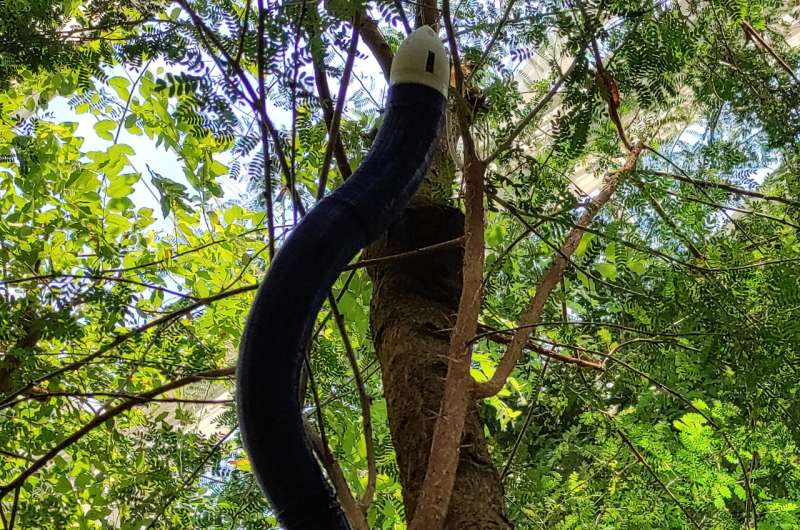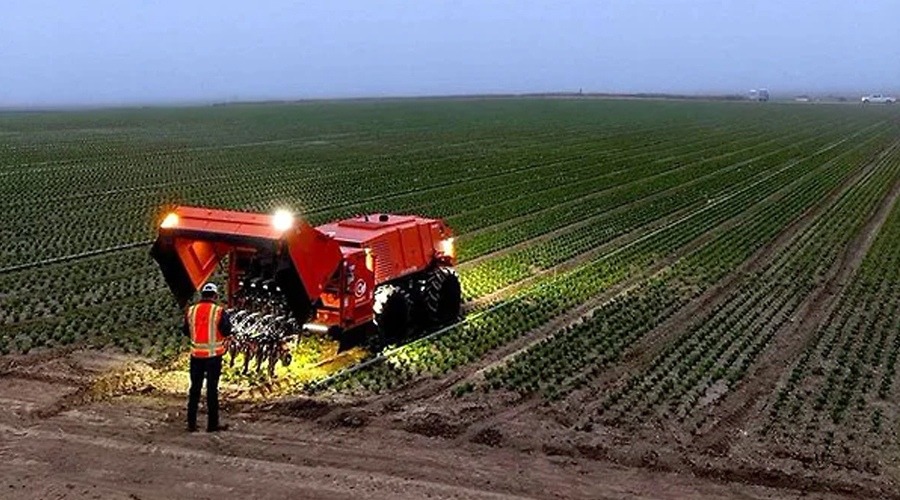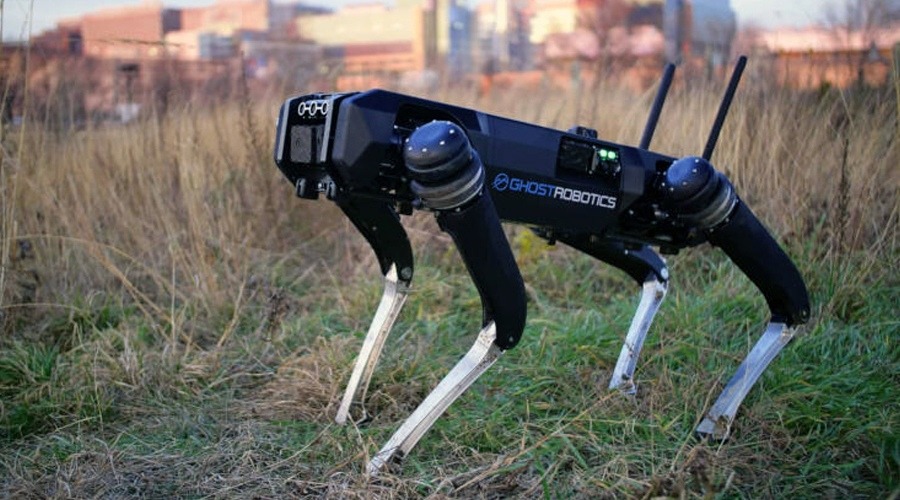Researchers in Italy and France have pioneered a first-of-its-kind robot in the fusion of capabilities - it can three-dimensionally print new body segments as a means of locomotion and controlled growth.
Dubbed FiloBot, this snake-shaped robot uses a rotational printing process to add coil after coil of tubular material behind its head, becoming vine-like tendrils along which it essentially hauls its base module housing batteries and controls.
The team from Italy's Institute of Italian Technology(IT) and University of Montpellier drew inspiration from the lengths some climbing plants traverse through adaptive stem and shoot growth toward sunlight sources. This informed FiloBot's sophisticated sensors guiding the embedded printer to additively extrude plastic material for extending itself.
Operators can also remotely command general growth directions they desire through programming. Combined with the robot's movement, this imbues researchers fascinating control over fairly dynamic reconfiguration absent in most soft robots to date.
"Our vine robot implements, for the first time, an effective design concept that marries additive manufacturing with the spontaneous climbing ability of plant tendrils," explained Liyu Wang, lead author of the published research. "This marks a radical shift in the plant-inspired robotics field."
Within FiloBot's rotating print head lies the nozzle melting plastic filament from an inkwell reservoir at its base before precisely extruding more linear body framing with integrated circuitry. The head rotation also pulls the rest of the robot behind itself as it lays down new segments.
Researchers believe FloraBot could monitor hazardous environments too risky for humans, acting as semi-autonomous sensor platforms. The robot may also assess landslide or avalanche risks across difficult terrain. Alternative applications include studying pollution in remote areas or constructing autonomous assemblages needed in various scenarios.
"Our vine robot paves the way to a new design scheme, adding dimensionality and reconfigurability within soft growing robots to unlock unprecedented capabilities," explained Barbara Mazzolai, senior author and director of the Center for Micro-BioRobotics at Italy's Institute of Technology.
The multi-material and sensor-guided 3D printing approach allowing the robot to effectively shape and reshape itself breaks new ground in the eyes of researchers focused on next-generation soft robots. The built-in versatility and responsiveness showcases this technology's promise.


















